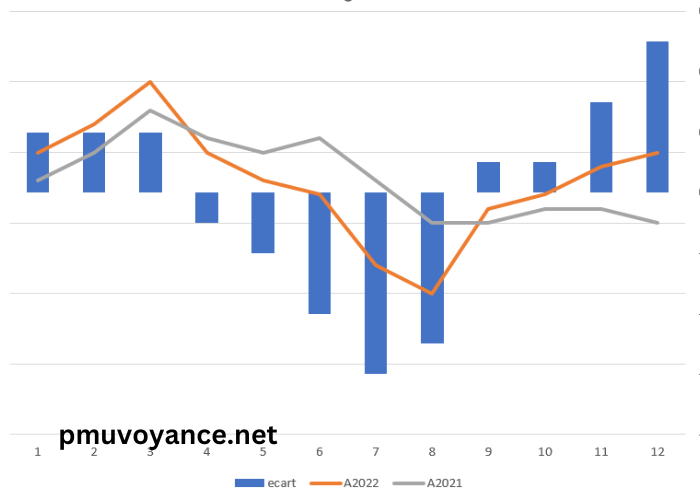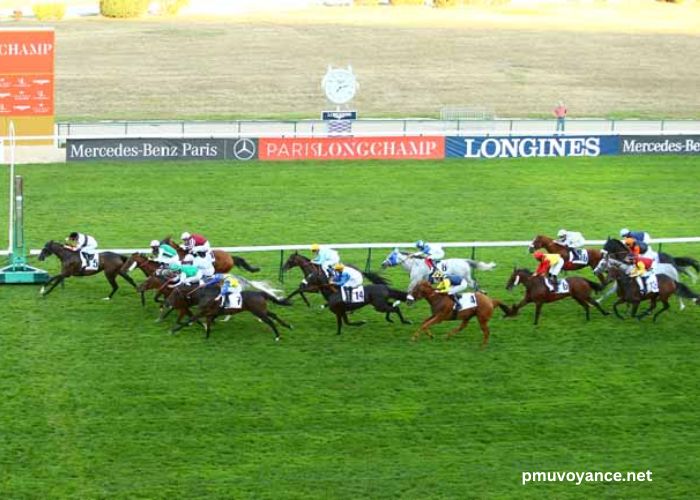In the realm of horse racing, understanding various betting strategies can significantly enhance your chances of making profitable wagers. One such strategy that has gained attention among bettors is “Ecart 10 12.” This concept revolves around analyzing the performance gaps of horses and leveraging this information to make more informed betting decisions. This article provides an in-depth exploration of “Ecart 10 12,” including its definition, how it works, and practical tips for utilizing it effectively.
What is “Ecart 10 12”?
“Ecart 10 12” is a term used in horse racing betting that refers to a specific strategy based on performance gaps between horses. The term “ecart” translates to “gap” or “difference” in English, and “10 12” signifies a particular range of performance gaps that bettors should focus on.
The “Ecart 10 12” strategy involves analyzing the difference in performance metrics, such as finishing times or speeds, between horses that have finished in the top positions of previous races. By focusing on these gaps, bettors aim to identify patterns and trends that can inform their betting decisions.
Understanding the Concept of “Ecart 10 12”
To effectively use the “Ecart 10 12” strategy, it’s essential to understand its underlying principles:
1. Performance Gaps Analysis
The core of the “Ecart 10 12” strategy lies in analyzing the performance gaps between horses. This involves looking at how much time or distance separates the top-performing horses from the rest of the field. For instance, a gap of 10 to 12 seconds in finishing times can be a significant indicator of a horse’s competitive edge.
2. Historical Data Review
The strategy relies heavily on historical data. Bettors need to review past race results to identify horses that consistently perform within the 10 to 12-second gap range. This historical data provides valuable insights into a horse’s potential performance in future races.
3. Identifying Patterns
By examining performance gaps, bettors can identify patterns that may indicate which horses are more likely to perform well in upcoming races. This analysis helps in making more informed predictions about which horses are likely to finish in the top positions.
How to Implement the “Ecart 10 12” Strategy
Implementing the “Ecart 10 12” strategy requires a systematic approach to analyzing performance data and applying it to your betting decisions. Here’s a step-by-step guide on how to effectively use this strategy:
1. Collect and Analyze Historical Data
Start by gathering historical race data, including finishing times, distances, and positions of horses. Focus on races where horses finished within a 10 to 12-second gap from the top positions. Analyze this data to identify horses that frequently perform well within this range.
2. Evaluate Current Race Conditions
Consider the current race conditions, including the track surface, distance, and weather. These factors can influence performance gaps and should be factored into your analysis. Horses that have performed well under similar conditions in the past are more likely to succeed in similar future races.
3. Assess Horse Form and Track Records
Review the current form and track records of the horses in the upcoming race. Look for horses that have shown consistent performance within the 10 to 12-second gap range in their recent races. Pay attention to any recent changes in form, training, or jockeys that might affect performance.
4. Apply the Strategy to Your Bets
Based on your analysis, apply the “Ecart 10 12” strategy to your betting decisions. Consider placing bets on horses that have demonstrated a strong performance within the 10 to 12-second gap range in previous races. Use this information to guide your bets and enhance your chances of success.
Advantages of the “Ecart 10 12” Strategy
The “Ecart 10 12” strategy offers several advantages for bettors looking to improve their betting outcomes:
1. Data-Driven Approach
The strategy is grounded in data analysis, providing a systematic approach to betting that reduces reliance on intuition alone. By focusing on performance gaps, bettors can make more informed decisions based on historical data.
2. Identifying Consistent Performers
By analyzing performance gaps, the strategy helps in identifying horses that consistently perform well. This focus on consistency can increase the likelihood of successful bets and improve overall betting outcomes.
3. Adapting to Changing Conditions
The “Ecart 10 12” strategy can be adapted to changing race conditions by considering factors such as track surface and weather. This adaptability ensures that the strategy remains relevant and effective under varying circumstances.
Challenges and Considerations
While the “Ecart 10 12” strategy offers several benefits, it’s important to be aware of its challenges and limitations:
1. Data Availability
Access to comprehensive and accurate historical data is crucial for implementing the strategy effectively. Bettors may face challenges in obtaining detailed performance data, especially for less popular races or tracks.
2. Variable Race Conditions
Race conditions can vary significantly, and performance gaps observed in past races may not always predict future outcomes accurately. Bettors need to consider current conditions and potential changes that could impact performance.
3. Horse Behavior and Factors
While performance gaps provide valuable insights, they do not account for all factors influencing a horse’s performance, such as health issues, injuries, or changes in training. It’s important to consider these factors alongside performance data.
Real-Life Examples of Success with “Ecart 10 12”
To illustrate the effectiveness of the “Ecart 10 12” strategy, here are a few real-life examples:
- Example 1: In a recent race, a bettor used the “Ecart 10 12” strategy to identify a horse that consistently performed within the 10 to 12-second gap range in previous races. The horse’s strong performance history and consistent gaps led to a successful bet, resulting in a significant profit.
- Example 2: Another example involved a bettor analyzing historical data and identifying a horse with a strong track record of performing within the 10 to 12-second gap range. Despite challenging race conditions, the horse delivered a top performance, validating the effectiveness of the strategy.
Conclusion
The “Ecart 10 12” strategy provides a valuable approach to horse racing betting by focusing on performance gaps between horses. By analyzing historical data, current race conditions, and consistent performers, bettors can make more informed and strategic betting decisions.
While the strategy offers numerous advantages, including a data-driven approach and adaptability, it’s important to consider its challenges and limitations. By combining the “Ecart 10 12” strategy with a comprehensive understanding of race conditions and horse behavior, bettors can enhance their chances of success and achieve better betting outcomes.
Incorporating the “Ecart 10 12” strategy into your betting approach can provide a strategic edge in the competitive world of horse racing. With careful analysis and informed decision-making, you can leverage this strategy to make more successful bets and maximize your potential for profit.



